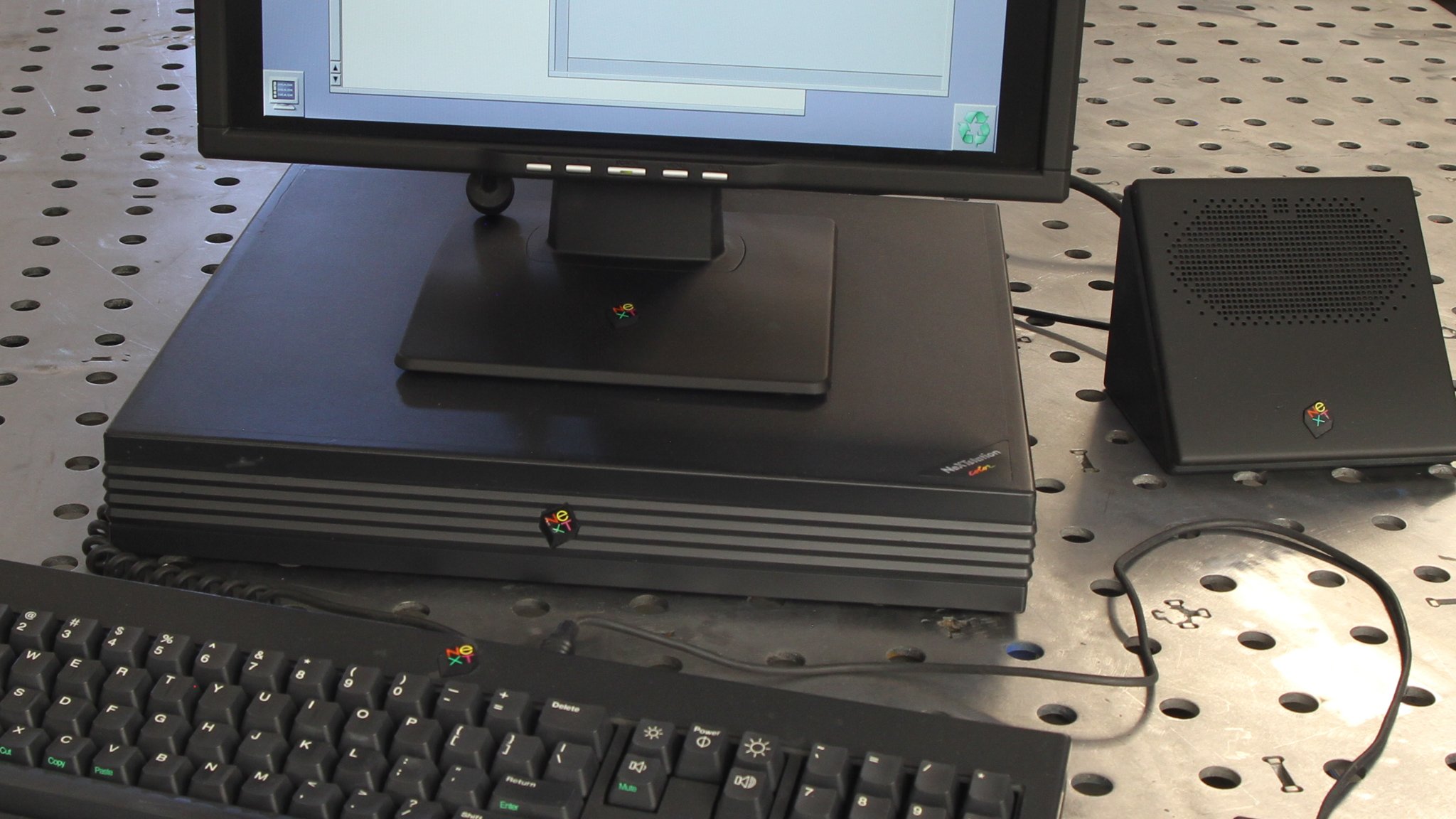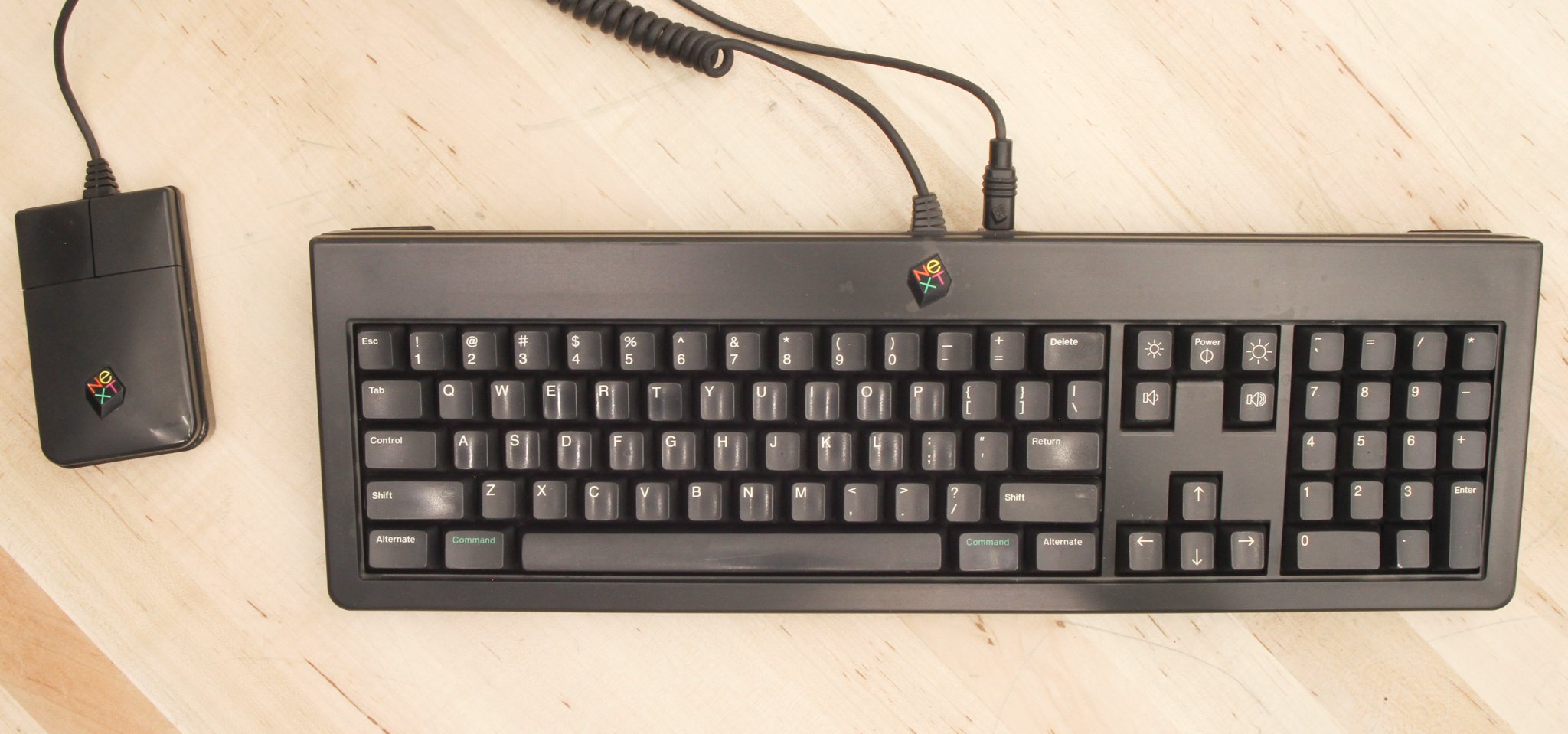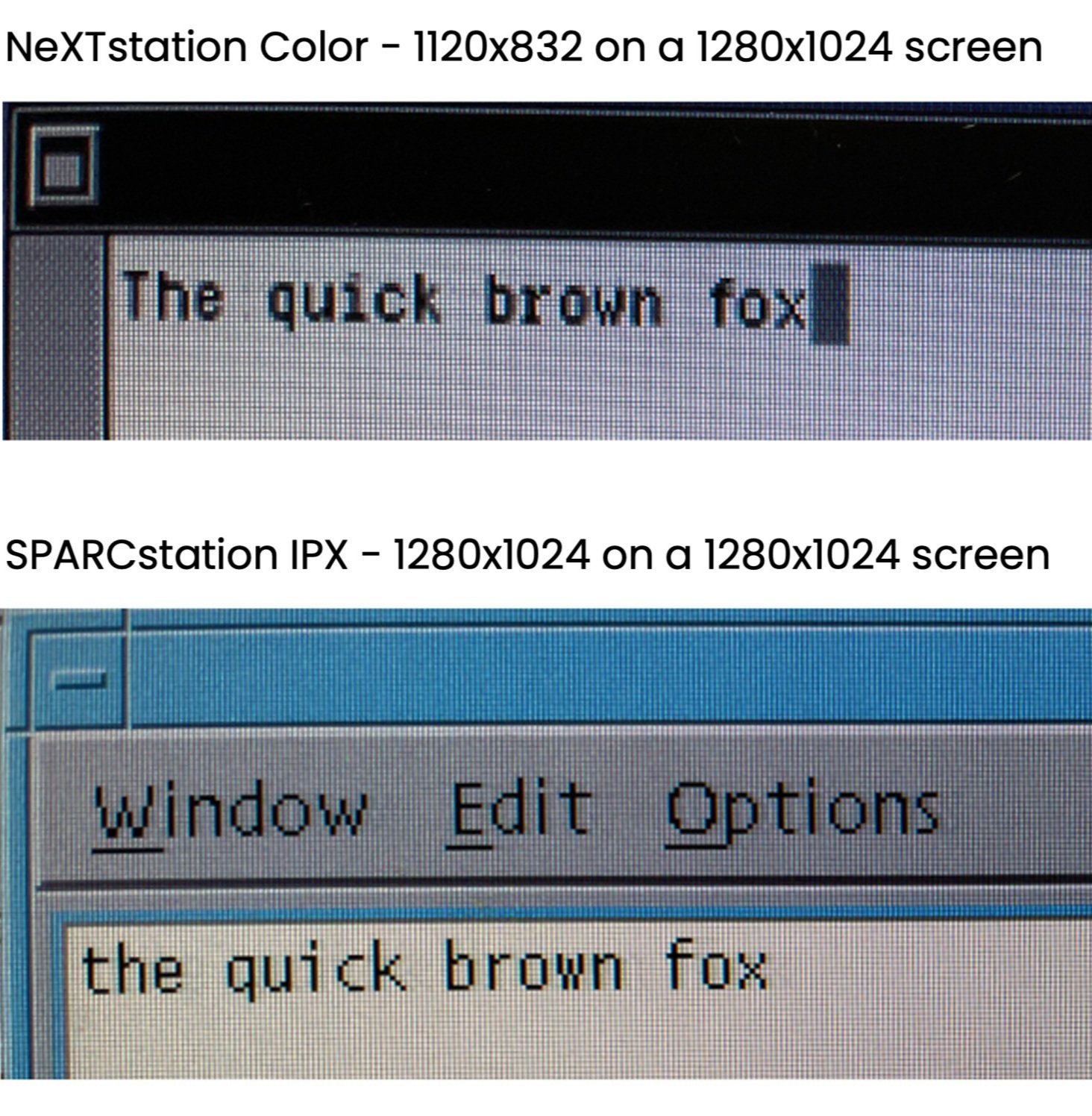
The NeXTstation Color
The NeXTstation Color was introduced in September 1990 and was considered by some to be the Mac that Steve Jobs could not build at Apple. It had a more modern OS based on a Unix derivative and Mach Kernal, and it compared favorably to high end Macs of the day that were still running the non-multitasking MacOS. The NeXTstation Color was the first Color NeXTstation and a lower-cost alternative to the NeXT Cube. Of historical significance, NeXT computers and their object-oriented design software tools were used by Tim Berners-Lee and Robert Cailliau at CERN to develop the world's first web server (CERN httpd) and web browser (WorldWideWeb). Pioneering PC games Doom, Doom II, and Quake (with respective level editors) were developed by id Software on NeXT machines.
Acquisition
The NeXTstation Color CPU was given to me as a gift. It didn’t come with any peripherals, but the CPU unit itself was in great shape; only the front logo is a bit scuffed. Over the following months I acquired a keyboard and mouse from Ebay. The remaining piece of the puzzle was to acquire a genuine NeXT Sound Box. They are increasingly rare, but I was able to find one that was cosmetically in bad shape but functioned perfectly.
Initial Testing
At the onset I only had the main system unit, so ascertaining the condition of the box was difficult. It needed a new fan which was obvious from the sounds of the fan bearings. In addition, it needed a new clock battery, both easy to find on the internet.
The box is powered on by a key on the keyboard. I didn’t have a keyboard, so after some research I determined there was a pin on the 13W3 video connector that carries the active low power-on signal from the keyboard. To boot the box without a keyboard, I shorted the power-on signal pin to ground on the connector and then plugged in a 13W3-VGA cable to an extra Sun Monitor. Happily, it did boot up. I couldn’t do anything but I could see that it would boot!
Configuration
The NeXTstation Color uses a 25Mhz 68040 CPU. It came with 12MB of RAM installed expandable to 32Mb. This NeXTstation Color has 32mb of RAM installed. In context of the time these were reasonably small memory sizes and a testament to the efficiency of the operating system at the time. It has a 2.88Mb floppy drive. I don’t know the original size hard disk that came with the box, as I replaced it soon after acquiring it and before I could really boot it. As with most NeXT machines, the keyboard and mouse use a proprietary protocol, while some late model NeXT machines used ADB (Apple Desktop Bus) protocol for input devices. It has onboard 10baseT networking as well as a coax network connection. Video is delivered via a 13W3 connector, however the NeXT uses a proprietary “Y-Cable” where the video signals go direct to the monitor, and the other pins go to a DB19 connector that connects to the NeXT Soundbox.
The general configuration is as follows:
Motorola 68040 25MHz CPU
Motorola 56001 25MHz Digital Signal Processor
15 Dhrystone MIPS
2 MFLOPS DP LINPACK
12MB to 32MB of main memory expandable using SIMM's
1.5MB VRAM video memory
16 bits/pixel color
4 bits/pixel alpha channel
4096 simultaneously displayable colors
Screen resolution 1120x832
Hard Drive Replacement
The functional Hard Drive was replaced with a new ZuluSCSI card.
I exclusively use ZuluSCSI RP2040 cards in my workstations. Initially, about half of my systems were equipped with SCSI2SD V6 cards, which worked great. However, during the pandemic, parts for those cards became nearly impossible to obtain. Toward the end of the pandemic, ZuluSCSI cards were introduced to the market, offering significant improvements.
One of the main enhancements is the use of standard files for disk images. This was a game changer, making it much easier to back up and share images.
Download the STL for the SCSI2SD board floppy drive bay adaptor
Download the STL for the SCSI2SD board to hard drive bay adaptor
NeXT OS 3.3 Installation
Much to my delight, the OS install on NeXTstation color was the easiest I have encountered. After googling, I found a site that maintains a NeXTstation working disk image. This is generally used by people running emulation software but works great on a real box. After configuring the SCSI2SD board for the requisite SCSI devices, it was just a matter of bit copying the drive image onto the virtual hard disk on the memory card. And... it booted!
Installed Base OS Image that comes with ‘Previous’ NeXT emulator
What a Joy to use!
Prior to this acquisition I had never played with a NeXTstation for more than a few minutes. The hardware is well built (the chassis is made of cast magnesium), the keyboard is delightful and has a very different feel than most keyboards I have, and the mouse - well the mouse sucks, but I guess you can’t win them all.
The Soundbox Hunt
The original NeXT machines came with the MegaPixel black and white display (CRT). The NeXT station would connect to the Mega Pixel display and the keyboard would connect to the display. The mouse would then connect to the keyboard. All very Apple-ish. Then, when NeXT moved into the color machine business, they decided that having the display “in-the-loop” was getting problematic (probably due to cost). So, they simply removed the small circuit board from the Mega Pixel display and placed it into a new enclosure known as the SoundBox. From this point on, the CPU connected to the Display via 13w3 analog RGB (as was common for the time) and the sound box via a DB19 connector requiring a very special cable Y-cable. The Soundbox had a microphone and a speaker as well a transcoding logic to input keyboard+mouse information and multiplex it with bi-directional sound data to and from the CPU. If you don’t have a soundbox with a NeXTstation Color, you don’t have a computer.
Realizing that finding a working soundbox was going to be difficult, I found a nice gentleman that makes and sells a soundbox workaround board. It’s a workaround because it doesn’t (yet) handle any sound, just the interface between the keyboard+mouse and the CPU. His job is exasperated by a worldwide shortage of DB19 connectors that nobody uses for anything any longer and no one used a lot of at the time. As a result, he 3D prints the connectors and installs the connection pins in them by hand. If you don’t have a soundbox, be thankful he exists!
In the end, I did finally acquire a NeXT Soundbox on Ebay. It was in a lot of other NeXT things including a Floptical Drive for a NeXT Cube and several various cables including two of the hard-to-find Y-Cables. In the interim I had made a Y-Cable myself out of necessity.
How to make a NeXTstation Color Y-Cable
The SoundBox had a lot of cosmetic damage in the form of scratches. Fortunately, it refinished nicely, and you would never know it had been reworked.
If at this point you are feeling like getting a NeXTstation Color is going to be a labor of love, you would be correct!
The Challenges of LCD Displays with Retro Workstations
Getting an adequate color display device for any of these workstations of this area is also a bit of work. All of the workstations of this era, NeXT, Sun, SGI, use analog color signals generally delivered via a 13W3 cable. Virtually none of the CRT’s from the 80’s and 90’s work any longer, so you need to find LCD monitors that work with these boxes. You can construct (or buy) 13w3 to VGA cables (or adaptors), as VGA was also an analog color signal. The real issue with all these boxes is they are what is known as Sync-on-green (SOG). This means the sync signal is part of the green signal (or monochrome for video cards that are not color). Not all monitors will use this sync signal so you must do your research here. But, I have found the more modern, yet still old, Sun Microsystems LCD’s do work pretty well. This is simply due to the fact the Sun was the only Workstation Vendor to survive long enough to make it into the LCD display era. Thankfully, most monitors of the 2000+ era are multisync as well. They will generally sync to anything from the 80’s or 90’s. So, I used my go to model of Sun LCD for the NeXTstation Color, a Sun Model 365-1432-01 or 02).
Resolution
The Sun color LCD’s of the 2000’s do an adequate job of displaying the NeXTstation color’s display. They don’t do a great job of it. The problem really lies in the resolutions used in that era. Sun’s default was 1152x900, the NeXT is 1120x832. None of these resolutions are what later became “standard” resolutions in the PC industry. This is a problem because LCD’s are so good at pixel perfect, you end up seeing very clearly the aliasing of the source pixels into a display that has a different number of pixels natively.
My SGI Indy looks great because they used a framebuffer size of 1280x1024 (what later became a ‘normal’ LCD native display resolution). I fixed the problem with my Suns by acquiring TGX+ cards that could display at 1280x1024. But sadly, the NeXT never became popular enough to escape its odd-ball resolution issue. It works fine, but the screen will never look much better without some sort of resolution scaling solution. (People are working on it in the community however).
A Retro Reimagined NeXT LCD Monitor
Using an old Sun LCD on a restored NeXTstation Color didn’t really feel like it gave justice to how much fun the NeXTstation is to use. So, I got an idea. I had several of the Sun LCD Monitors mentioned above. What if I did a retro-recreation of what a NeXT LCD might have been like?
Final Thoughts
In many ways the NeXT restoration was one of the most difficult ones of the Workstation series. There were only 10K NeXT boxes made in total, so there just isn’t the breadth of information available online. I took some time to sort out issues like the crazy Y-cable and to find a keyboard and mouse. In the end, I’m really glad I did it. The NeXTstation color is a joy to use. It feels more sluggish than workstations of that era, but it also feels more refined than Macs of that era. It combines the heritage of the Mac with the forward-looking optimism of a modern mac based on Unix. It was the machine that could not happen at Apple, but it ended up defining Apple computers of the future.










